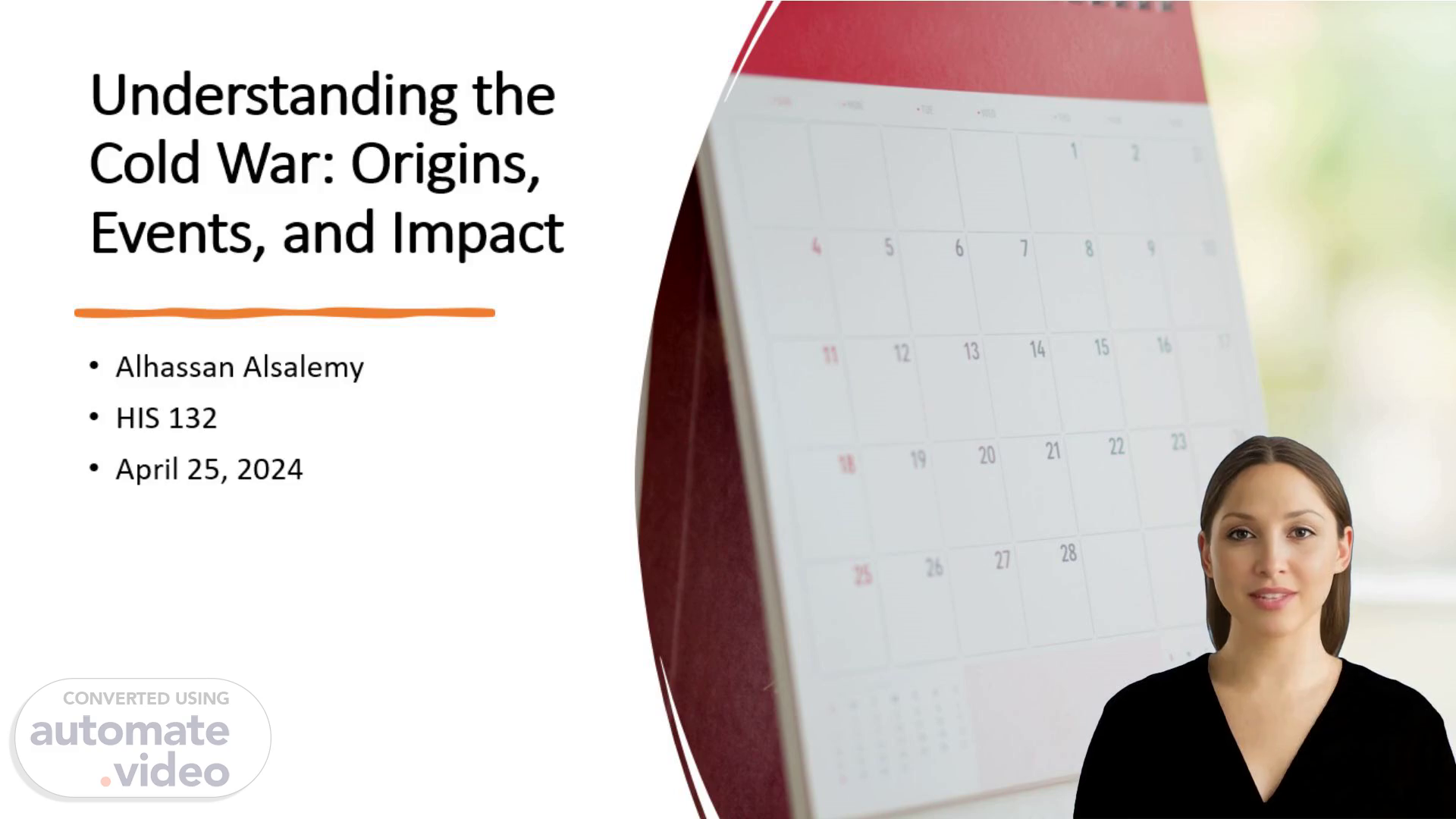
Understanding the Cold War: Origins, Events, and Impact
Scene 1 (0s)
[Virtual Presenter] Today I would like to take us on a journey through the history of the Cold War. The Cold War was a pivotal conflict that changed the destiny of the world. I will discuss the events that led to the Cold War its impact on countries around the world the political economic and social challenges that it brought out and how they are still affecting countries today. Let's begin..
Scene 2 (23s)
[Audio] The Cold War was a prolonged period of tension between the United States and the Soviet Union. It started in 1945 after the conclusion of World War II a time marked by ideological clashes globally. When making your presentation it is essential to consider the speaker’s notes to cover all key points on the origins events and effects of the Cold War. Some of the questions to consider in the preparation of the presentation include: When did the clash begin and in which locations? Which countries were concerned in the Cold War? What were the major geopolitical and ideological discrepancies?.
Scene 3 (1m 2s)
[Audio] In order to gain a comprehensive grasp of the Cold War it is vital to consider the various foreign political views that underpinned the conflict. China is of particular relevance in this case as its stance changed from its initial alignment with the Soviet Union to a more apolitical position largely due to ideological discrepancies. This shows how changing political interests had an immense effect on the happenings of the Cold War..
Scene 4 (1m 29s)
[Audio] Examining the effects of the Cold War from an economic perspective is essential in order to understand its impact on output employment and capital formation. The new political and economic system that came with the Cold War led to significant changes in economic policies and put a strain on existing economic resources resulting in a major global economic impact..
Scene 5 (1m 52s)
[Audio] Brazil was not part of the Cold War in the sense of military involvement though the country was affected by the economic and technological developments that took place during the conflict. In terms of social perspectives the moral implications of the Cold War were not a major focus of discussion among the Brazilian population. Nevertheless an examination of the social interests of Brazil reveals a complex set of interests that were affected by the Cold War..
Scene 6 (2m 21s)
[Audio] Discussing the Cold War it is crucial to recall the significant resolution that concluded the Cold War in 1991. The crumbling of the Soviet Union caused the vanishing of communist governments in Eastern Europe and the reunification of Germany drastically altering the worldwide political scene. This resolution marked a novel period of global connections and worldwide steadiness..
Scene 7 (2m 45s)
[Audio] When assembling a presentation it is essential to include the speaker's notes. Speaker notes are an excellent approach to deliver supplemental data for each slide without adding too much text. The Cold War serves as an excellent illustration of how various countries look and educate the occurrence differently. By perceiving the distinct outlooks on the Cold War we can obtain an understanding of current geopolitical and historical recollection..
Scene 8 (3m 14s)
[Audio] The Cold War was a period of tension between the United States and the Soviet Union from 1945 to 1989. This conflict was largely caused by events such as the Russian Revolution and the end of World War II. The Cold War affected many aspects of society and left its mark on world history. This presentation has hopefully offered a better understanding of the Cold War's origins events and impact. For future presentations it is important to ensure speaker's notes are included for key points and that slides are not cluttered with excessive text. Thank you for your attention..